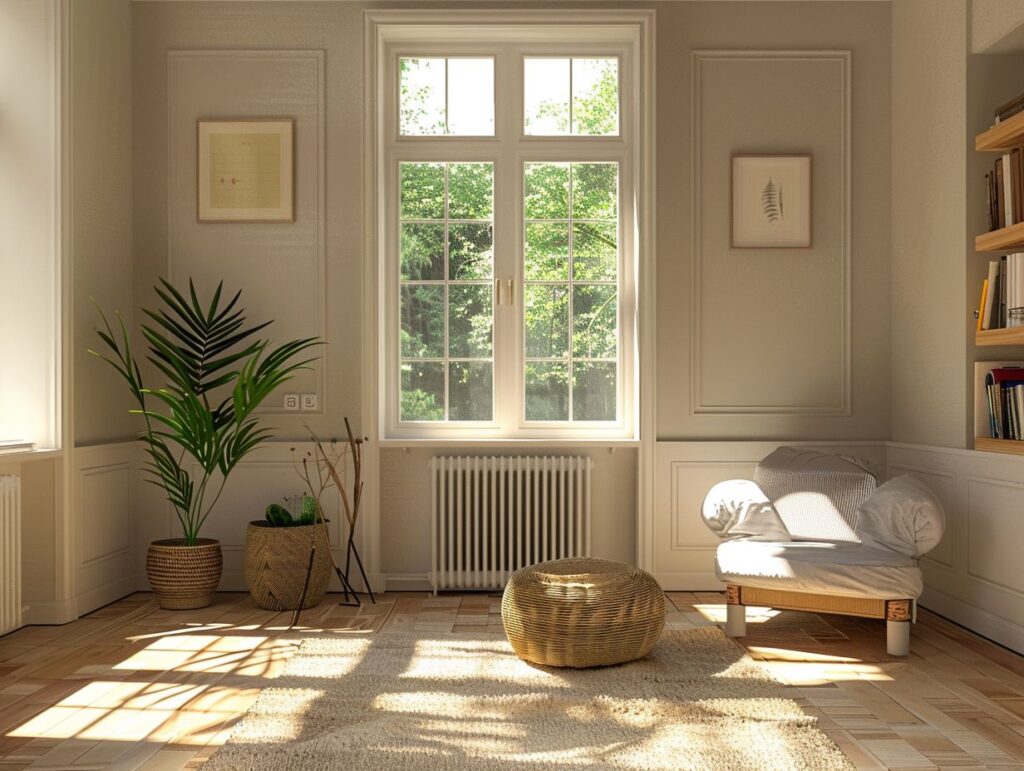If you are seeking to refresh the appearance of your living room radiator but find yourself uncertain of how to proceed, this article will delve into various radiator types, materials, and finishes.
Additionally, we will evaluate the advantages and drawbacks of painting a radiator, offering detailed guidance on executing the painting process independently.
Alternative methods for enhancing a radiator’s aesthetics will be discussed, along with indications for when replacement may be a more suitable option.
Let us now delve into the details to rejuvenate the appearance of your radiator.
Key Takeaways:
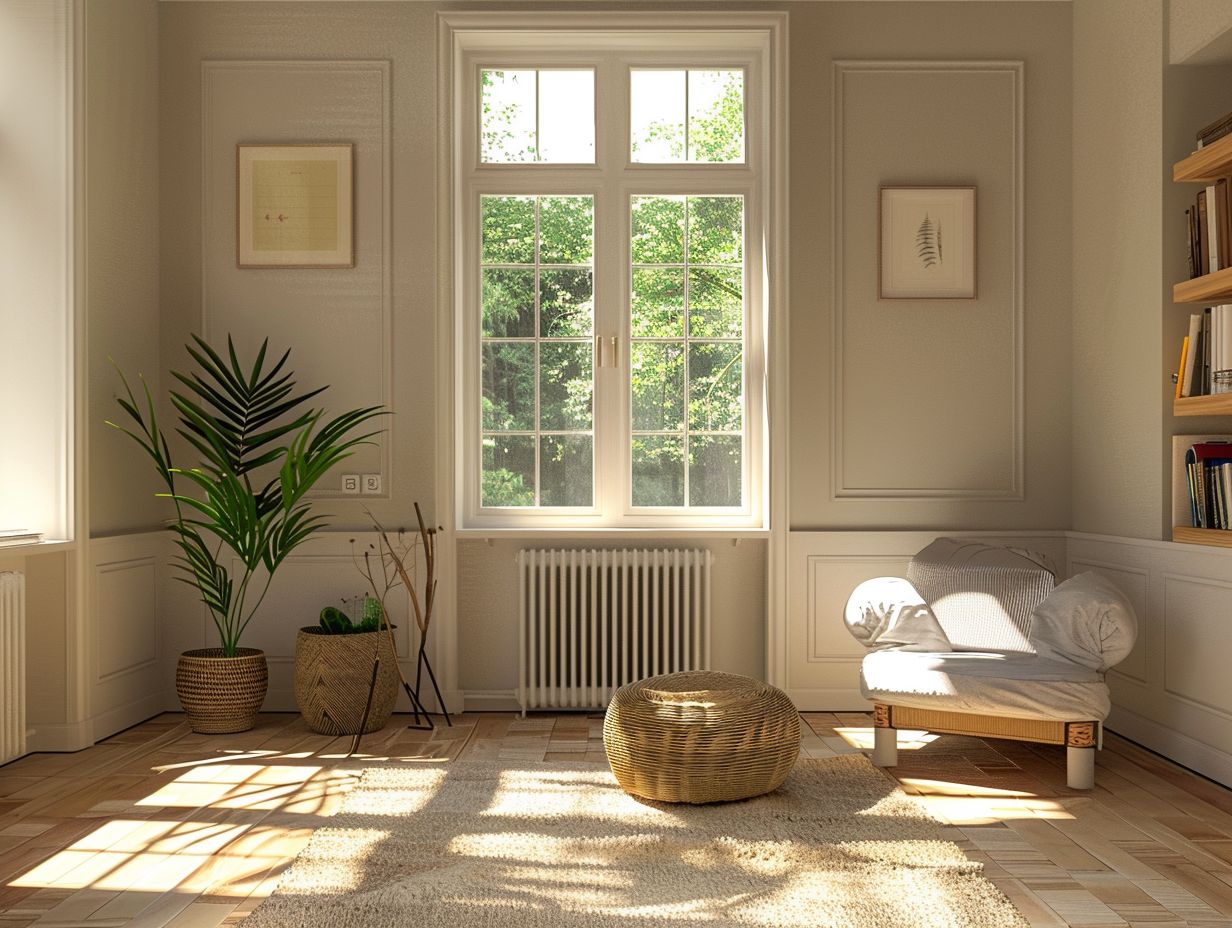
- Painting a living room radiator can be a cost-effective way to update its look and blend it in with the room’s decor.
- Before painting, it is important to choose the right type of paint and prepare the radiator properly to ensure a smooth and lasting finish.
- If painting is not an option, there are alternative ways to update a radiator, such as using radiator covers or replacing it altogether if it is old or damaged.
Understanding Radiators
Understanding radiators involves knowing how these heating devices work to provide warmth in a room. Radiators are essential components that transfer heat from a source to the surrounding air through metal surfaces, creating a comfortable environment.
The metal surfaces of radiators play a crucial role in the efficient distribution of heat. When hot water or steam flows through the network of pipes into the radiator, the metal surface quickly absorbs the heat.
As the metal warms up, it radiates heat outward, warming the air in the room. This process is what allows radiators to effectively heat up a space and maintain a consistent temperature.
The design and positioning of radiators also impact how effectively they can disperse heat across a room, ensuring even warmth throughout.
Types of Radiators
When you are exploring the types of radiators, it is crucial to consider factors such as heat output, size, design, and installation requirements. Different radiator types are tailored to suit various heating needs and room aesthetics.
Panel radiators, also known as flat panel radiators, are a popular choice for modern spaces due to their sleek and minimalistic design. Typically constructed from metal with a large surface area, they provide efficient heat distribution.
In contrast, column radiators offer a more traditional appearance with their vertical columns that create a classic aesthetic.
Electric radiators, powered by electricity, are versatile options that can be easily controlled to achieve precise temperature settings in any room.
Materials and Finishes
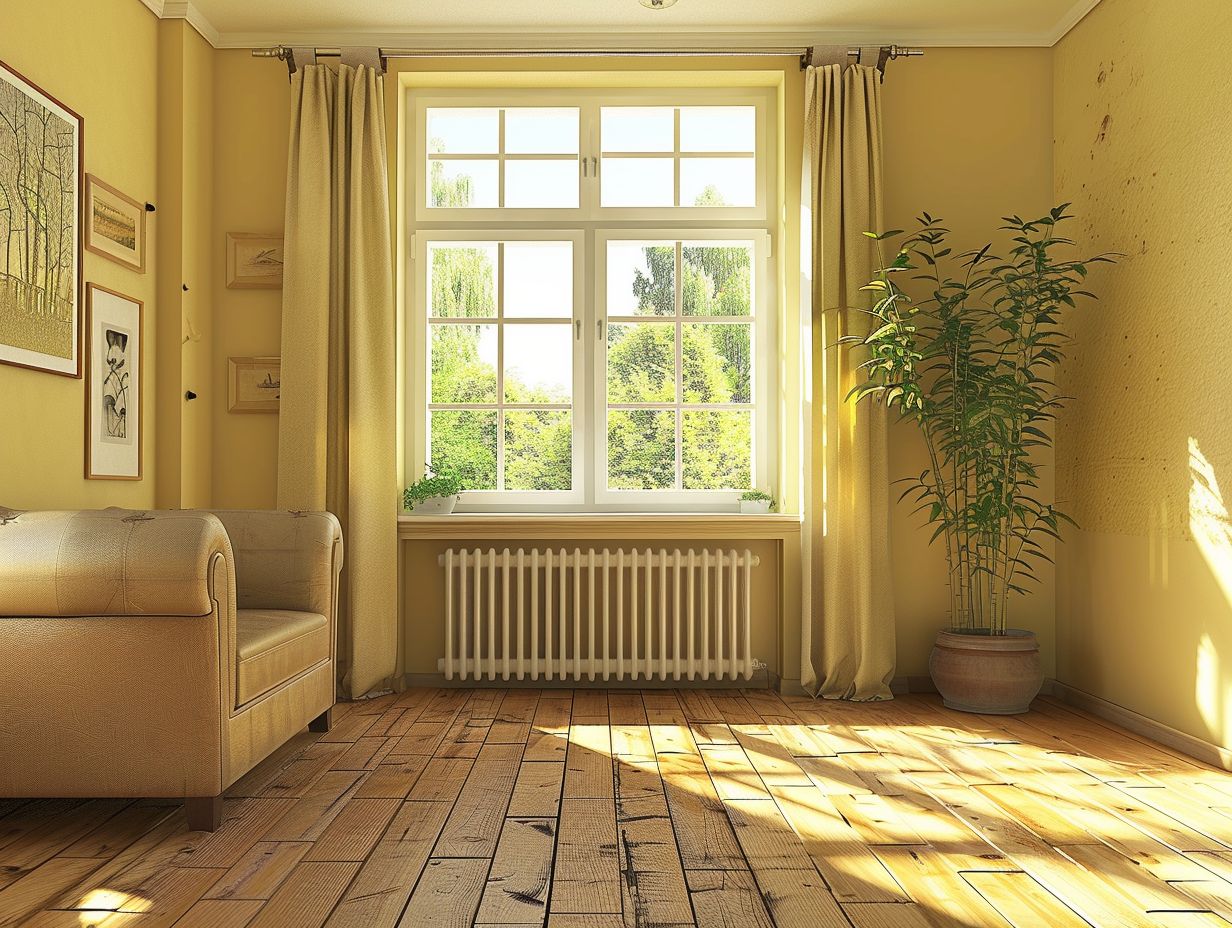
The materials and finishes used on radiators play a vital role in their appearance, durability, and heat conduction properties. When selecting paints or coatings for radiators, it is crucial to consider their impact on both aesthetics and functionality.
Enamel paints are a popular choice for radiators because of their glossy finish and high-temperature resistance, ensuring durability.
Powder coatings provide a smooth and uniform finish that resists chipping and fading, maintaining their appearance over time. For a touch of sophistication and improved heat distribution, metallic finishes like brushed nickel or copper are ideal options.
Each type of finish offers unique advantages, so it is essential to weigh both visual appeal and practical considerations when choosing the appropriate coating for your radiator.
Pros and Cons of Painting a Radiator
When painting a radiator, you have the opportunity to undertake a rewarding project that allows for customisation and aesthetic enhancement in a room, along with some important considerations to keep in mind. The type of paint, colour scheme, and overall quality of the finish are key factors to ponder.
Selecting the appropriate colour for your radiator is crucial as it can significantly impact the visual appeal of the space. Light colours can help the device blend seamlessly into the room, while bold hues can make it a prominent feature.
As you proceed with the painting process, remember that proper preparation is essential. This includes cleaning and sanding the surface to ensure optimal paint adhesion. Opting for high-quality paint specifically formulated for metal surfaces can prevent flaking and guarantee long-lasting results.
While applying a fresh coat of paint can breathe new life into an old radiator, it is important to note that using poor quality paint may result in chipping and could potentially affect its heat conduction efficiency. It is essential to choose the right materials and execute the painting process with care to achieve the desired aesthetic and functional outcomes for your radiator.
Advantages of Painting a Radiator
When painting a radiator, you have the opportunity to align it with the room’s decor, establish a cohesive colour scheme, and enhance the overall aesthetic appeal.
This customisation allows for personalisation and can elevate the radiator into a design element. Your choice of paint colour for the radiator holds significant importance in shaping the room’s ambience.
Opting for a finish that harmonises with the walls or serves as a standout focal point integrates the radiator seamlessly into the room’s design. This straightforward yet impactful do-it-yourself project not only adds a splash of colour but also showcases your individual style.
A quick refresh of the radiator’s appearance with a fresh coat of paint can instantly revitalise the space, creating a more welcoming and harmonious atmosphere.
Potential Drawbacks
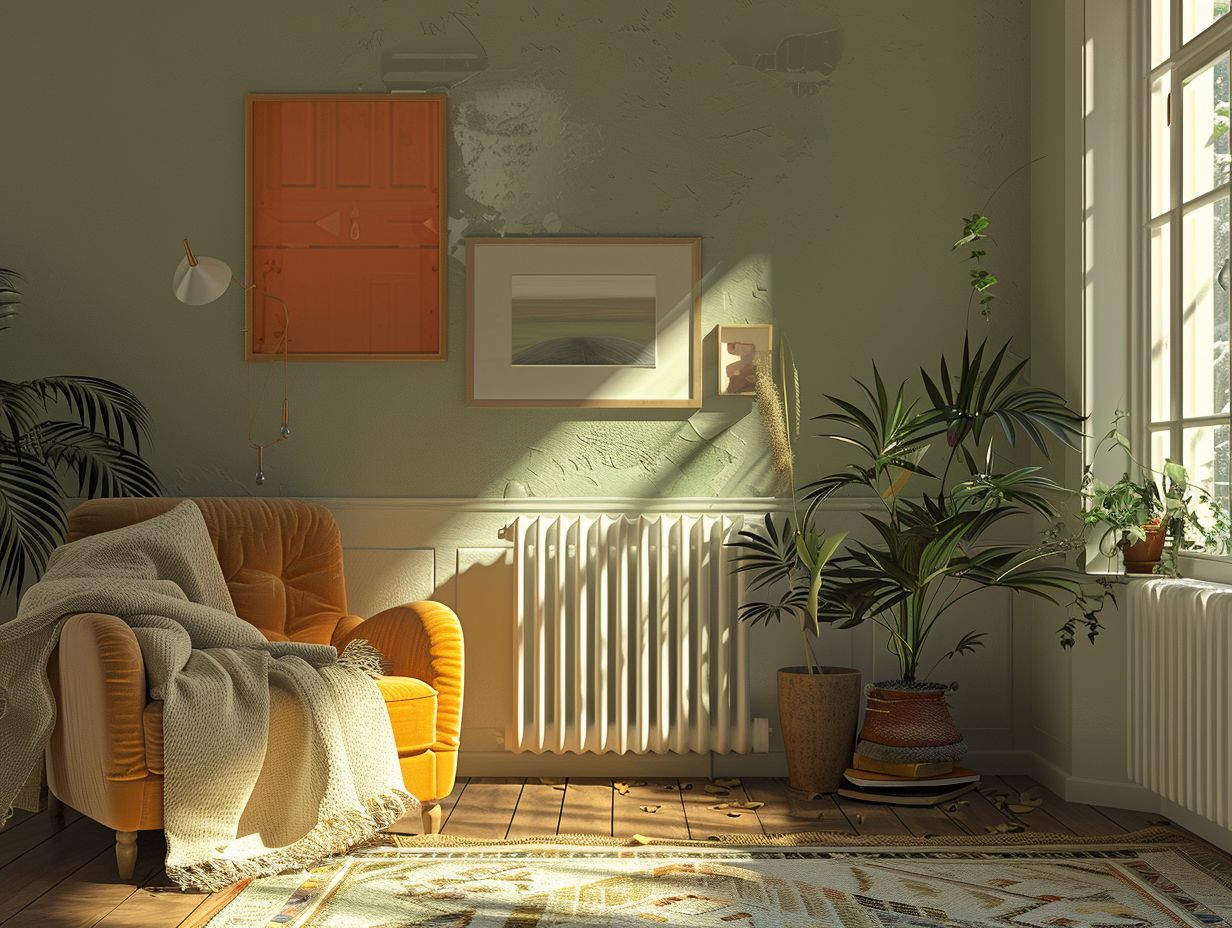
When painting a radiator, you may encounter challenges such as heat resistance, paint adherence, and the necessity of proper priming. The process of painting a radiator requires thorough preparation to achieve the best possible outcomes.
Heat resistance plays a critical role in the painting of radiators, given their exposure to high temperatures during operation. Using paint that is not capable of withstanding such heat levels may lead to issues like peeling or discoloration over time.
Employing a primer specifically formulated for metal surfaces is vital to ensure the paint adheres correctly. Without the appropriate primer, the paint may not bond effectively to the radiator, resulting in an inconsistent or patchy finish.
Adhering to the recommended radiator painting process is key to avoiding these potential challenges.
Steps to Paint a Living Room Radiator
When painting a living room radiator, you must follow precise techniques and thorough preparation to achieve a professional result. Each step in the process, from selecting the appropriate paint to applying coats evenly, is crucial for the success of the project.
- To begin, prepare the radiator surface meticulously by thoroughly cleaning it to eliminate any dust, debris, or grease. Utilise a mild detergent and water solution for cleaning and ensure the surface is completely dry before moving forward.
- Subsequently, lightly sand the surface to enhance paint adhesion. Employ painter’s tape to mask off any areas that you do not intend to paint, such as the surrounding walls or flooring.
- For painting, choose a high-quality paint specifically formulated for metal surfaces to guarantee durability and a lasting finish.
Preparation and Materials
Before you start painting a radiator, it’s essential to prepare adequately and gather all necessary materials. Key steps include cleaning the surface, choosing the appropriate primer, and protecting adjacent pipes to achieve a successful paint job.
To begin, thoroughly clean the radiator surface to eliminate any dust, grease, or debris that may impede paint adhesion. Utilise a degreaser or a mild detergent and water solution, followed by a thorough rinse and drying process.
Next, carefully select a high-quality primer specifically designed for metal surfaces to ensure proper adhesion and long-lasting durability of the paint. It is crucial to shield nearby pipes or fixtures from paint splatters or drips by securely covering them with painter’s tape or dust sheets.
Painting Techniques and Tips
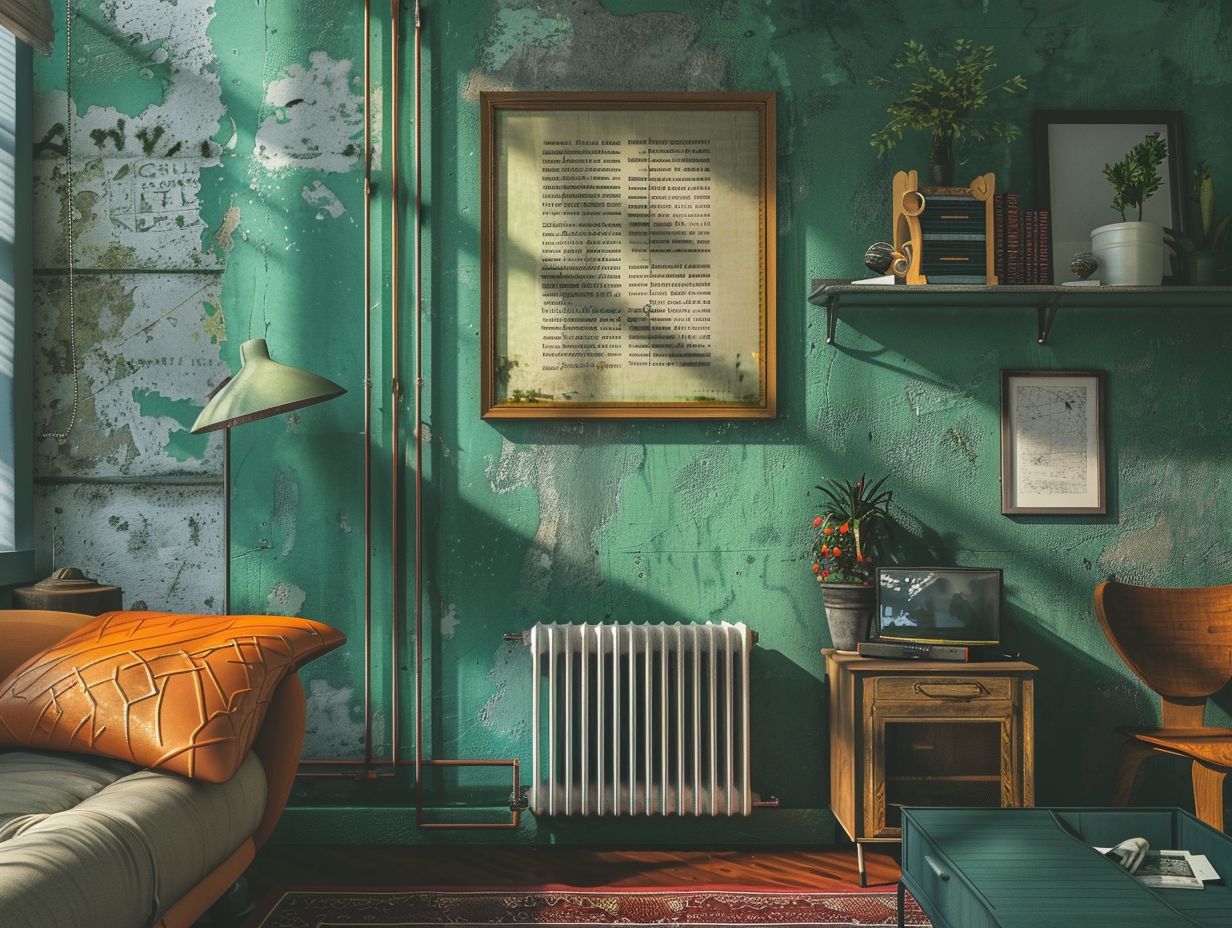
When painting a radiator, it is essential to utilise appropriate techniques and follow specific tips to improve the final appearance and durability of the painted surface. Begin by selecting the right finish and applying thin coats of emulsion, as attention to detail throughout the process is crucial.
Proper preparation of the radiator surface is a critical step before painting. Thoroughly clean the radiator to eliminate any dust, dirt, or grease that could impact the paint’s adhesion. When choosing a finish, opt for a heat-resistant paint designed for radiators to prevent peeling or discolouration.
Apply multiple thin coats of paint rather than a single thick coat to achieve a smooth and uniform finish. Allow each coat to dry completely before applying the next layer to prevent drips or streaks in the final coating.
Alternative Options for Updating a Radiator
Plus painting, there are alternative methods available for updating the appearance of a radiator whilst also enhancing its functionality. By exploring different options, you can introduce creativity and personalisation to the transformation of the radiator within a space.
One common method is the use of radiator covers, which not only contribute a decorative element but also enhance safety by reducing the surface temperature. Another option is to consider replacing parts like valves or knobs to elevate the quality and performance of the radiator.
By incorporating decorative enhancements such as ornate grilles or intricate patterns, you can completely transform the aesthetic appeal of the radiator, turning it into a focal point within the room’s design. These alternatives offer diverse ways to renovate and rejuvenate your radiators, addressing both practical needs and style preferences.
Other Ways to Change the Look of a Radiator
When changing the appearance of a radiator, consider various strategies beyond just painting. You can update the colour scheme, integrate radiator covers, or conceal pipes to achieve a seamless look. Each option provides distinct advantages in improving the room’s aesthetic.
Updating the colour scheme of the radiator is a simple method to refresh a space. Choosing vibrant colours can make a bold statement, while softer hues create a more serene atmosphere. Concealing pipes not only improves visual appeal but also ensures safety and cleanliness.
Ornate covers or modern designs can enhance the radiator’s visual impact, turning it into a focal point of the room and adding personality and style. By combining these approaches, you can create a customised and unified appearance that complements the overall room design.
Frequently Asked Questions
Can I Paint a Living Room Radiator?
Yes, you can paint a living room radiator. It is a relatively simple process that can be done by anyone with basic painting skills.
What type of paint should I use to paint a living room radiator?
You should use a paint that is specifically formulated for use on radiators. These paints are heat resistant and will prevent the color from fading or peeling due to the high temperatures.
Do I need to prepare the radiator before painting?
Yes, it is important to properly prepare the radiator before painting. This includes cleaning the surface to remove any dust or grime, and sanding down any rough spots or rusted areas.
Can I paint a radiator while it is still connected?
It is not recommended to paint a radiator while it is still connected to the heating system. It is best to disconnect the radiator and move it to a well-ventilated area before painting.
How many coats of paint should I apply?
This will depend on the type of paint you are using and the coverage it provides. In general, 2-3 coats should be sufficient for a smooth and even finish.
Should I use a brush or spray paint to paint a living room radiator?
It is recommended to use a brush for painting a living room radiator, as it allows for more precise application and better coverage. However, spray paint can also be used if you prefer a quicker method.

